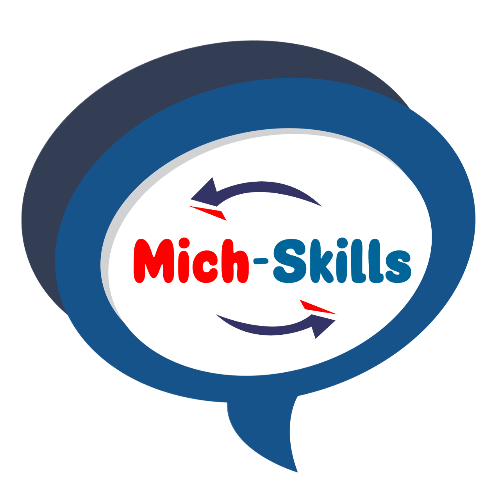LO6. Navigate Learning Management System for All e-Learning Requirements
LMS stands short for Learning Management System
Learning, because you use it to deliver education courses or training programs.
Management, because it helps you organize these courses (create them, change them, assign them to students, grade them, etc.).
System, last but not least, is just a fancy word that translates to “software”.
An LMS is a computer program.
Just like Word helps you write documents and Gmail helps you manage your emails, an LMS is a software program that helps you create, manage and deliver eLearning courses.
An LMS is the “engine” that powers eLearning, and in the most common form it consists of two separate parts:
- A server component that performs the core functionality (creating, managing and delivering courses, authenticating users, serving data and notifications, etc.)
- A user interface that runs inside your browser as a web (like Gmail or Facebook), that is used by administrators, instructors and students
What does an LMS do exactly?
LMS lets you create eLearning content (lessons), organize it into courses, deliver the content (either internally to your business or to a wider internet audience), enroll students to said courses, and, finally, monitor and assess their performance (attendance, grades, etc.).
1. Creating an eLearning course
In order to deliver your eLearning content you first need to add it in your LMS.
You can do this by either creating your course material from scratch (by writing your lessons’ content inside the LMS), or by importing existing material (a Word document, a PowerPoint presentation, Wikipedia articles, etc.).
Advanced LMS software, like TalentLMS, let you add course material from various sources and in different formats, and even allow you to incorporate multimedia files (video, audio, graphics, etc.) to your lessons.
Another essential feature related to course creation is the easy inclusion of online assets (from YouTube videos and Wikipedia articles to online presentations and tweets), which lets you leverage the wealth of material available online.
2. Organizing your courses
The next step after having created your eLearning material is to organize it.
This can be as simple as offering a single course or as complicated as having multiple courses, departments and student groups operating across several branches.
An LMS should allow you the freedom to structure your eLearning offering in any way you want.
TalentLMS, for example, gives you a set of organizational tools (courses, groups, categories, skills, branches, etc.) that you can combine in multiple ways and have the ultimate flexibility in how you deliver your lessons, whether you are a multi-national with branches in 20 countries or a small business in a single city.
3. Delivering your Courses
After you have created and organized your courses, you’re ready to deliver them to your learners.
A modern LMS should handle all cases, allowing you to serve and manage both small and large numbers of students, to have restricted or open enrollment and to be easy to integrate with payment processors for paid courses.
Modern LMS platforms should also be able to cater to mobile devices, with responsive user interfaces, touch friendly interaction and offline accessible modes.
4. Managing your users
The ability to manage courses and users is what put the “M” in LMS.
There will be three kind of users, to begin with: administrators (the people setting up and configuring your LMS), instructors (the people preparing the lessons and accessing the learners’ progress) and students (the people doing the learning!).
As for the learners, those could be your employees (if you are an enterprise, large organization, government agency or private business), or students enrolled to your courses (if you are an educational institution offering lessons to the general public).
Managing those users involves registering them in the LMS, assigning them to courses, interacting with them as instructors, determining what kind of content they are allowed to see, organizing tests and conference sessions, grading them and handling their payments (if you’re selling courses).
A good LMS takes the tedium out of these tasks, automating all the repeated actions, and allowing you to perform changes and updates to multiple items (students, courses, etc.) at once.
5. Monitoring and assessing student progress
One of the most important features an LMS offers (and a huge time-saver), is the ability to track and monitor the students’ progress in real time.
Whether you’re dealing with 10 or 10,000 students, an LMS gives you automated and quick access to course enrollment statistics, attendance records, student grades, and many other performance metrics.
A modern LMS should also include real-time alerts and notifications, for example to let instructors know that a student has submitted his homework, or that an e-conference session is about to begin.
Another must for advanced LMS platforms is reporting, that is, the ability to query and display their data in graphs and charts, allowing you to easily spot trends or issues (and to have something nice to show in your next board meeting).
TalentLMS, for example, allows you to filter your student and course information in multiple ways (e.g. “show me only students from department X enrolled in class A”, or “show me the test scores for this particular student”), and get aggregated statistics on them, which you can even export in Excel-compatible format.
6. Advanced LMS features
There are also some more advanced features that your LMS might or might not support (and if it doesn’t, you can always toss it and get TalentLMS). Those are:
1. The ability to organize and hold eConference sessions, with multiple students participating through audio and video
2. Online whiteboard functionality, so instructors and students can create and share writings and drawings in real time
3. The ability to use the LMS with mobile devices (smartphones and tablets), including being able to study when offline
The ability to use the LMS with mobile devices (smartphones and tablets), including being able to study when offline
Source:
Navigate Learning Management System (LMS) for all e-learning requirements
Source: https://www.talentlms.com/elearning/types-of-learning-management-systems
